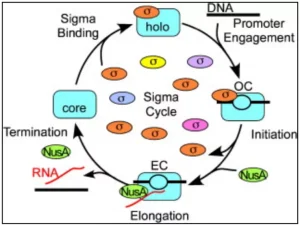![]() 22 Nov 2025
22 Nov 2025

A new India–US study challenges the long-accepted “sigma cycle” model of bacterial transcription by showing that sigma factors can remain attached throughout transcription.

Check Out UPSC CSE Books
Visit PW Store

<div class="new-fform">
</div>